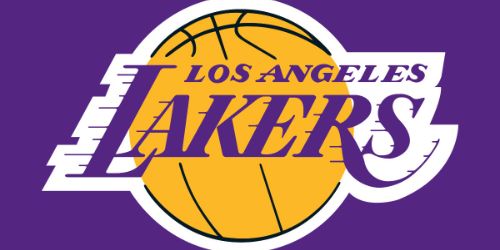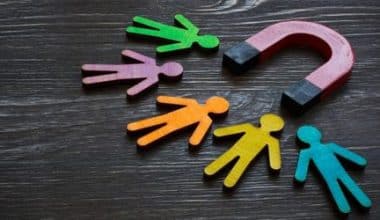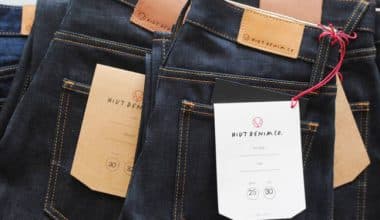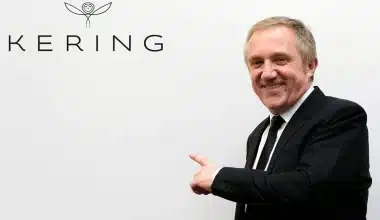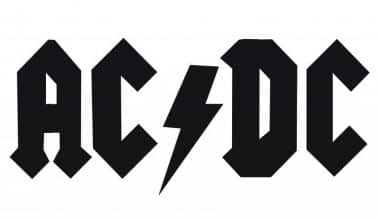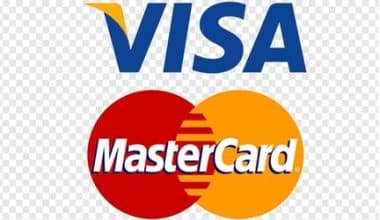The “Los Angeles” logotype, the visual centerpiece of the Lakers’ logo, hasn’t changed since the 1960s, but the gold basketball has seen modest color variations. The final logo makeover occurred in 2001; the new design’s bolder colors and black outline let the brand stand out even more.
The Los Angeles Lakers, one of the most well-known basketball teams in the US, have won 16 NBA titles. It is a professional squad that competes in the league’s Pacific Division of the Western Conference. Staples Center is where they play their home games. The LA Lakers were ranked as the second most valuable brand in the NBA by Forbes in 2015.
In 1947, Ben Berger and Morris Chalfen assembled the team from pieces of the Detroit Gems. The Los Angeles Lakers logo has undergone several changes throughout the brand’s history.
About Lakers
The Los Angeles Lakers are a storied professional basketball team with their home court in California. Their short name is Lakers. The organization was founded in 1947 and has held the top spot in the NBA lineup ever since. The Lakers’ home court is Crypto Com Arena, and Darvin Ham serves as the team’s head coach.
A Brief History of the Lakers Logo
Although the Lakers have been associated with Los Angeles for most of their existence, the team’s original home city was Minneapolis. In honor of the more than 10,000 lakes in the state, it was given the name “Lakers.”
The original Lakers logo was a brown and black hoop with a map of Minnesota, the team’s first home state, and a yellow star showing where Minneapolis was on the map. The wordmark “MPLS,” which included the word “Lakers” at the bottom and stars at the beginning and finish, was also present on the map.
1960
The Lakers moved from Minnesota to the West Coast and eventually settled in Los Angeles, California. The Lakers chose to rename, as most teams do when they relocate from one state to another. Los Angeles replaced Minnesota as the team’s name, but “Lakers” remained, so they became the Los Angeles Lakers. The Los Angeles Lakers chose their logo in 1961. It has the words “Los Angeles Lakers” in red-purple letters over a greenish basketball.
The squad made minor color changes to the emblem in 1976–1977. The ball’s green color changed to yellow, while the text was lightened to light purple lilac. The basketball’s seams were also turned around so that they faced the opposite direction, and a darker outline was applied to it to make the design stand out more.
The Evolution Of The Los Angeles Lakers Logo
Moving to a new state is often followed by rebranding for the majority of NBA clubs. The team’s logo was noticeably less vibrant during its time in Minnesota, and the players’ t-shirts had a simple, abstract bright yellow graphic. However, the team’s logo and clothes were improved once they relocated to Los Angeles. The Lakers’ logo has changed over time, as shown below.
Los Angeles Lakers Logo (1948-1960)
The first team to be called the Lakers was the Minneapolis Lakers. They first played in the late 1940s. Even though it wasn’t as bright as their current logo, their old design was still very striking. It featured a white shock map of the then-home state of Minnesota inside a yellow basketball that was made to resemble a globe.
A small, yellow, five-pointed star showed where Minneapolis was on the white map. Right above the basketball with a star and after the wordmark was the acronym “MPLS,” and below it was “LAKERS.”
The Minneapolis Lakers used this logo until 1960, when they moved to Los Angeles, California, and changed their name to the Los Angeles Lakers.
Lakers of Los Angeles logo (1961-1976)
After moving from Minnesota to California, the Lakers changed their name and gave themselves a new image. The ball was the sole element of the original logo that was kept. The team name was moved to the basketball center, and the yellow was changed to dark, grainy green. The logo proudly declared “LOS ANGELES LAKERS” in dark purple rather than “MPLS LAKERS.”
Los Angeles and “LAKERS” were written in a much larger typeface on separate lines within the purple inscription. Lines left from the larger “LAKERS” wordmark make it look like the letters are moving.
1977-2001
The Lakers’ logo stayed the same after the team changed its name to the Los Angeles Lakers until its primary colors were modified in 1997. The ball transformed from a grainy green to orange, dark purple, and eventually light blue, while the primary lines of the ball changed from white to black. In addition, the seams of the basketball, which were originally facing right, were turned around to face the other way.
The horizontal lines streaming off “LAKERS” got thicker, giving the appearance of even more speed and motion, while the color for the “LOS ANGELES LAKERS” team was upgraded to a cleaner, brighter shade of purple. The last modifications were made in 2001, and since then, there have only been minor revisions that have only improved the colors.
2003 – the Present
Designers tweaked color saturation in 2002 to increase the logo’s intelligibility. Since 2002, the logo hasn’t changed much, except that the golden, black, and purple colors have become more saturated to make the colors stand out.
Elements of the Lakers Logo
The original Minneapolis Lakers logo only had the team name and a basketball. The current logo has stayed close to the original, except for color alterations, wordmark relocation, and the change from “MPLS” to “Los Angeles.”
One of the NBA’s most recognizable logos is a basketball with seams drawn in a certain way, the word “Los Angeles Lakers” written across it in purple, and lines coming out of it that look like they are moving.
The Lakers’ logo’s distinctive wordmark serves as the design’s focal point. The logo, which formerly read “MPLS LAKERS,” now reads “Los Angeles Lakers” in dark purple. Instead, the message is placed directly on the ball, as in the original logo. The colors stand out more in the logo because of the black outline.
Los Angeles Lakers Logo Font: The “Bodoni” font is used in the Los Angeles Lakers logo. Although they purchased the usage rights, the club does not own this font. The typeface has ornate accents and is a serif type; it is also italicized.
History of the Company
The first version of the logo was made in 1947 when the team was based in Minneapolis and was called the Minneapolis Lakers. The original Lakers logo was a basketball with a brown and black outline and a white map of the team’s native state of Minnesota. The location of Minneapolis on the map was marked with a yellow star. Additionally, there was the wordmark “MPLS.” with stars at the start and end.
1960 — 1967
When the team moved from Minneapolis to Los Angeles in 1960, they had to get a new logo. The following year, a brand-new symbol was developed. It featured a gold basketball with the words “Lakers” and “Los Angeles” printed in red and purple. The distinctive streaks in the emblem first appeared at this point.
1967 — 1976
The Lakers’ logo, used from 1967 to 1976, had a green basketball with a purple message printed over it. It was the first version of the logo, but it needed a lot of changes to the color scheme and basic lines before it could be called the final version.
1976 — 2001
The Lakers’ logo was updated in 1976–1977. The ball developed a black outline, improving the artwork’s clarity. The colors were also somewhat changed. The basketball’s red-purple color was replaced by a light purple lilac, while the gold color shifted closer to yellow.
2001 — Today
The visual focal point of the symbol is the dark purple wordmark “Los Angeles Lakers.” It sits atop a gold basketball. The designers chose the color black for the outlining. The colors are more vibrant than in the previous iteration, which makes the logo stand out. The wordmark and basketball, however, both have the same shape.
Beginnings of the Lakers in Minneapolis (1947-1958)
When Minnesotans Morris Chalfen and Berger Morris bought the recently dissolved Detroit Gems of the National Basketball League (NBL) from Gems founder and owner C. King Boring and business partner Maury Winston, the “Lakers” name was first placed on a basketball jersey. The two paid $15,000 for the disbanded team, moved it to Minneapolis, and gave it the name Minneapolis Lakers in honor of Minnesota’s moniker, The Land of 10,000 Lakes.
However, with the Detroit Gems on the verge of collapse, all the players had been assigned to other NBL teams, leaving the “team” with only the equipment. Berger and Chalfen hired Max Winter, who later started the National Football League (NFL) team, the Minnesota Vikings, and became its owner. In addition, Winter purchased stock in the Lakers, which he kept until 1955 when he departed the team.
The Detroit Gems, who has since been renamed the Los Angeles Sparks, is the NBL’s worst-performing team. The Lakers were given the first pick in the 1947 Professional Basketball League of America dispersal draft. The team got one of the best centers in history, George Mikan, and the first coach of the Lakers, John Kundla, put together a group of players from the University of Minnesota. The team won the NBL championship in its first year, which was a sign of things to come for the Lakers.
Champions The Minnesota Lakers (1949-1950)
The following year, the Minnesota Lakers joined the Basketball Association of America (BAA), which consisted of 12 teams, and won the title in 1949. The Minnesota Lakers made nine NBA Finals appearances while Jerry West played guard. West took over as the team’s coach for three years after he stopped playing. West is known as “Mr. Clutch,” His silhouette is part of the NBA’s well-known logo. He also holds the record for the most points per game average in a playoff series (46.3).
The Lakers selected Elgin Baylor with the first overall pick in the 1958 NBA Draft, just out of college. For the 1958–1959 season, Baylor won the NBA Rookie of the Year Award with an average of 24.9 points and 15.0 rebounds per game. In 1959, he and Vern Mikkelsen led the team past the Atlanta Hawks and into the finals, where they lost to the Boston Celtics. This started a long-lasting rivalry between the two teams.
Depart for Los Angeles (1958-1968)
The owner of the Minnesota Lakers thought about transferring the team to Los Angeles after seeing how effectively the Brooklyn Dodgers’ relocation went. There were many good things about moving, like a good climate, less competition, and being a metropolis. Because of this, the Minnesota Lakers moved to Los Angeles, California, for the 1960–1961 NBA season and became known as the Los Angeles Lakers.
Incipient Los Angeles Logo Era
They kept the blue and white color combination after relocating to Los Angeles in 1960. The word “Los Angeles” is now written in cursive on the uniforms. In contrast to the home uniforms, which were white with royal and powder blue trim, the away outfits were royal blue with white and blue trim. The clips include
the wordmark “Lakers” on each leg’s side. During the seasons of 1996–1997, 2003–04, and 2020–21, the outfits were worn as throwbacks.
Change to Purple and Gold
Jack Kent Cooke bought the Lakers and relocated them to The Forum in 1967. Cooke gave the Lakers purple (which used to be called “Forum blue” until the early 1980s) and gold uniforms, which greatly changed their look.
1967–78
A slanted “Lakers” script and white numbers with gold or purple drop shadows were part of the original purple and gold design. The Lakers would continue to wear this look through the 1977–1978 season with minor tweaks to the striping pattern.
In the 2010–11 season, the gold uniforms from 1971–1972 were worn as throwback attire. In contrast to the originals, which had serifed player names and a slanted “Lakers” script, this uniform had sans-serif player names and a straight “Lakers” script.
1978–99
Before the 1978–1979 season, the gold uniforms were updated, changing the white numerals to purple numbers with white drop shadows. The new design debuted a year before Jerry Buss bought the Lakers and Magic Johnson started the Showtime era.
The Lakers’ outfits of the early 1980s included disparate purple hues. Most of the time, the jersey was colored darker while the shorts were colored lighter, and vice versa. In the following decade, this color problem was resolved. Before the 1986–1987 season, the typeface for the numbers was changed and shrunk, which caused changes to the jerseys. Also realigned into a straight arrangement was the “Lakers” script.
The “Showtime” gold outfits were brought back by the Lakers for the 2007–08 and 2016–17 campaigns. On December 30, 2007, the Lakers played a home game against the Boston Celtics while sporting short shorts that matched their retro outfits for the first half and baggy shorts for the second.
1999–2018
The Los Angeles Lakers introduced a new uniform lineup before the 1999–2000 season. The drop shadows were removed, a more modern script for “Lakers” was added, and the white numbers were returned on the gold uniform. The side stripes were also made to go to the jersey.
When it first came out, Nike outfitted several other teams, including the Lakers, with uniforms. When they unveiled their kits, this jersey was the first to have a “wishbone” collar, later used by the Dallas Mavericks, Detroit Pistons, Miami Heat, and Toronto Raptors.
Uniform in White as a Backup
The Lakers revealed a white alternate uniform for the 2002–03 season. The white jerseys were made in honor of Chick Hearn, who served as the team’s voice for forty years until his passing in August 2002 and were created by Lakers owner Jerry Buss’ daughter, Jeanie Buss.
Along with the white alternate outfit, the Lakers also showed off a new alternate logo with a purple “L” around a gold basketball. Before the 2004–05 season, this emblem was added to the purple and gold kits. Only Sunday games are played in these jerseys.
Unique Attire
From the 2007–08 season to the 2016–17 season, the Lakers wore white uniforms made just for the NBA’s Noche Latina events. The “Los Lakers” wordmark was on the outfits, similar to the Sunday whites. During the 2013–14 season, the Lakers wore a version of the Noche Latina uniform with sleeves. The back had greyscale designs, and “Los Lakers” was written in gold with purple trim.
From 2012 to 2016, the Lakers played in the NBA’s Christmas games. For those games, they wore special uniforms with a Christmas theme. The following special Christmas outfits were worn them:
- Uniforms were all white in 2012, with white lettering and purple trim.
- 2013: Sleeveless white outfits with chrome and purple hints primary logo.
- In 2014, the home kits became white and got a new “L” logo, purple numbers, and purple nameplates.
- The outfits for 2015 are creamy with elaborate lettering and numbers.
- In 2016, all-white ensembles with intricate lettering and numbers were popular.
Visit Nike
The NBA did away with the “home” and “away” uniform designations for the 2017–18 season when Nike assumed control of the league’s uniform contracts. Each NBA team has a white jersey, so the Lakers’ white jersey became the franchise’s “Association” jersey. Each NBA team has a gold “Icon” jersey and a purple “Statement” jersey.
Nike also has a “City” uniform that shows respect for the history and culture of each team’s region. The “Lore Series” of Lakers “City” uniforms was created to celebrate its finest players. Their “City” uniform for the 2017–18 campaign honored Kobe Bryant. The Lakers released a new “Lore Series” suit featuring Magic Johnson the next year. The Lakers honored Shaquille O’Neal with their “Lore Series” outfit for the next season. In their first years in Los Angeles, the Lakers wore jerseys that paid tribute to Elgin Baylor. In 2020–21, they will wear purple and gold jerseys for the “Lore Series.”
The Lakers were one of 27 clubs to don “mix-tape” uniforms for the NBA’s 75th anniversary special “City” series during the 2021–22 season. This design was unique, with a purple background and a few references to previous uniforms.
Read Also: Corvette Logo: The Story Behind The Mid-Engine American Sports Car
The team’s uniforms from 1967 to 1986 were used as a model for the slanted “Lakers” wordmark, drop-shadowed numbers, powder blue trim, and white stars representing the team’s time in Minneapolis. The current “L” alternate logo on the waist was a homage to the Kobe Bryant era, while the complete team name in the shape of a triangle on the shorts was a nod to the early 1960s logo.
Nike sometimes gives out an “earned” uniform to NBA teams that made the playoffs the year before. The Lakers’ version for 2020–21 was changed to the current Showtime-inspired design, but it was identical to the “Hollywood Nights” alternates they wore from 2013–2017. By winning the 2020 NBA Finals, they were the only team whose “earned” jersey featured a metallic gold Nike swoosh.
2018–present
Before the 2018–19 season, the Los Angeles Lakers got new uniforms and showed them off. The side stripes were taken off the gold “Icon” and white “Association” uniforms (the shorts still have this characteristic), while the purple “Statement” uniform has black side stripes with gold and white trim.
Also, for the first time since 1999, the numbers that stay the same have drop shadows. Another first for the team is that the Lakers’ purple uniforms will have gold numbers with white drop shadows, while their gold uniforms will again have purple numbers with white drop shadows.
The Lakers made minor adjustments to the purple “Statement” outfit before the 2022–23 season. The uniform number was altered to have black shoulder stripes and trim and gold side stripes.
Notable incidents involving Uniforms
Even though the Lakers usually wear purple on the road, gold at home, and white on Sundays at home, there have been a few times when they didn’t follow the rules.
The Lakers wore their traditional gold clothes for two away games in the 2007–08 season—December 21 against the Philadelphia 76ers and December 23 against the New York Knicks. The home squad wore their vintage white attire. They also competed in three away contests in their 1971–72 gold outfits, against the Celtics on February 10, the Knicks on February 11, and The Orlando Magic will play on February 13th. The Lakers’ opponents, except for the Magic, all donned vintage attire.
Also, for the first time since 1999, the numbers that stay the same have drop shadows. However, the Lakers were restricted to wearing only their gold “Icon” and white “Association” uniforms for either home or away games for the first two months of the season after Nike was named the league’s apparel provider for 2017 and beyond. After that, the purple “Statement” uniforms were added to the rotation.
On November 29, 2017, the Lakers played a home game against the Golden State Warriors while donning their purple “Statement” uniforms for the first time.
The 2020 Calabasas helicopter tragedy happened in the middle of the 2019–20 NBA season. It killed Kobe Bryant, his 13-year-old daughter Gianna, six other people in the helicopter, and the pilot.
Read Also: SKATE SHOE BRANDS: List of the Best Skate Shoe Brands in 2023 (Updated)
Above the Nike swoosh, a patch with his initials was put on to honor his legacy. Additionally, Kobe’s numbers are shown on the sidelines, with his #8 close to the Lakers’ bench and his #24 close to the opposing team’s bench. The patch is placed on the back ends of the Lakers’ home floor. The Los Angeles Lakers decided to wear their “Black Mamba” uniforms from the 2017–18 season during the 2020 NBA Playoffs.
These jerseys were first worn in Game 4 of the First Round against the Portland Trail Blazers, which was played exactly one day after Kobe’s birthday. The franchise added in its announcement the Lakers’ jersey rotation will be changed if they make it to the next round. Above the Nike swoosh in the form of a white heart was the number 2 jersey of Kobe’s daughter Gianna.
Showtime’s Era (1984-1985)
The LA Lakers had finally found their groove by the 1984–1985 season. The squad was in the midst of its “Showtime” phase, which was defined by a combination of “no-look passes off the fast break, pin-point alley-oops from half court, spinning feeds, and overhand bombs under the basket through triple beans.” The team won the Pacific Division for the fourth consecutive year by an NBA record of 20 games over second-place Portland. The Lakers also achieved new highs in terms of assists (2,575) and field goal percentage (545).
Years of Bryant and Gasol (2007-2014)
The Lakers’ ascent to the top of the Western Conference in April 2008 was made possible by Kobe Bryant’s outstanding season MVP performance. The Lakers beat the Phoenix Suns in the Pacific Division because Lamar Odom did a great job as a third option, and Marc Gasol could adapt to different situations. For the 55th time, they successfully defended their postseason spot and earned the top seed in the Western Conference for the first time since the 1999–2000 campaign. For the first time in his career, Kobe Bryant was also selected as the NBA’s Most Valuable Player for the 2007–2008 season.
Jordan Era (2018 – present)
The Lakers qualified for the postseason for the first time since 2013 during the 2019–2020 campaign. For the 17th time in the franchise’s history, they qualified for the 2020 NBA Playoffs with a 52-19 record. Because the COVID-19 epidemic made several players sick and forced the 2020 season to be put on hold so that lockdown and social segregation measures could be put in place, the season was badly hurt.
Later, games were played again at Disney World in Orlando, but only after strict health rules were established to protect the players. To stop the infection from spreading, the teams went into the center and played games with only a few spectators and no fans. The Los Angeles Lakers won the 2020 NBA Championship despite these setbacks.
Finishing the Lakers’ History & Logo
The LA Lakers logo and the Lakers have grown into one of the most prosperous sports franchises in American history and are still going strong after decades. Over the years, the team has produced many great players, such as Kobe Bryant, Wilt Chamberlain, Elgin Baylor, Jerry West, and LeBron James.
The Lakers are worth more than a billion dollars, have broken many NBA records, and have a never-ending supply of very talented players.
Font
The visual focal point of the symbol is the dark purple wordmark “Los Angeles Lakers.” It sits atop a gold basketball. The designers chose the color black for the outlining. The colors are more vibrant than in the previous iteration, which makes the logo stand out. The wordmark and basketball, however, both have the same shape.
The three team colors—purple, gold, and white—represent the current logo. Additionally, a hint of black enhances the harmony of the image. In the late 1960s, the Lakers chose this color palette, which was also included in their uniform. Since then, the colors have only slightly changed.
Colors of the Lakers Logo
The Los Angeles Lakers, who used to be called the Minneapolis Lakers, are one of the most well-known and successful National Basketball Association (NBA) teams. By the end of the 2020 season, the team would have won 17 NBA championships and set records for wins (3,125), winning percentage (.786), and appearances in the NBA finals (32). With both franchises contributing to 45.9% of the NBA’s 74 championships, the Lakers and Boston Celtics are tied for the most championship victories in league history.
The Lakers are now the best basketball team because they have been to many more finals (15 vs. 4 for the Celtics, who came in second) than the Celtics.
Conclusion
Throughout their history, the LA Lakers have displayed their recognizable logo. The Los Angeles Lakers logo is a purple “Los Angeles Lakers” wordmark on top of a gold basketball. It’s simple, but everyone knows it. It hasn’t changed much in terms of color or font.
Related Articles
- BASKETBALL LOGO: Designs, Rules, and Legends
- VIKINGS LOGO: Meaning, Design, History, and Games
- BEST STATES FOR CLIMATE CHANGE 2023
- YAHOO LOGO: Meaning, Why Yahoo Changed Their Logo and History
- FedEx LOGO: The Hidden Meaning, History & Evolution
